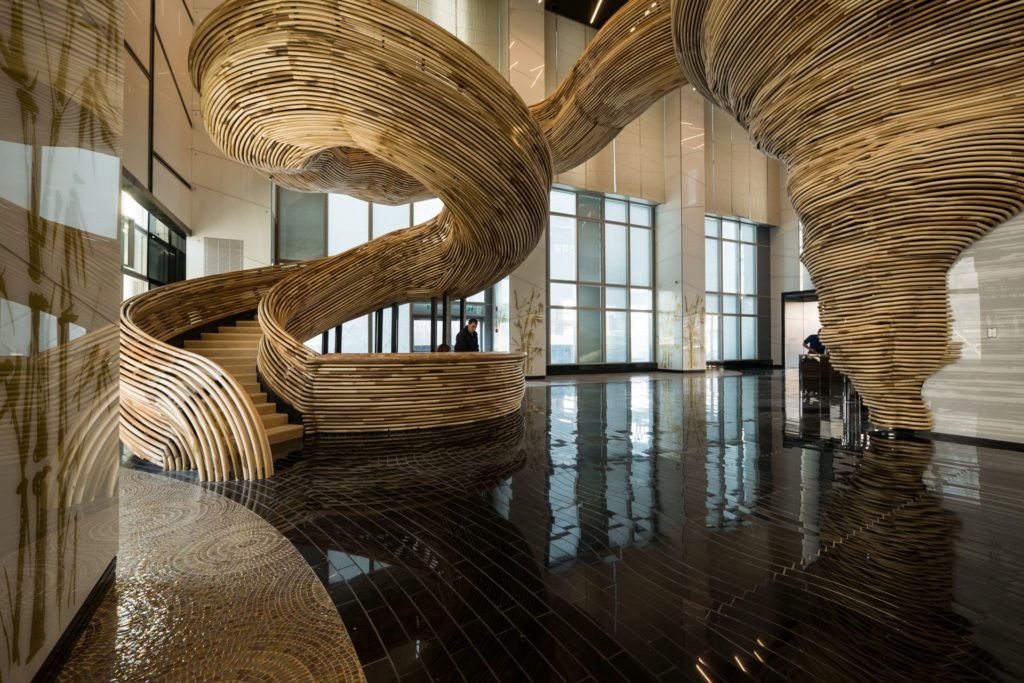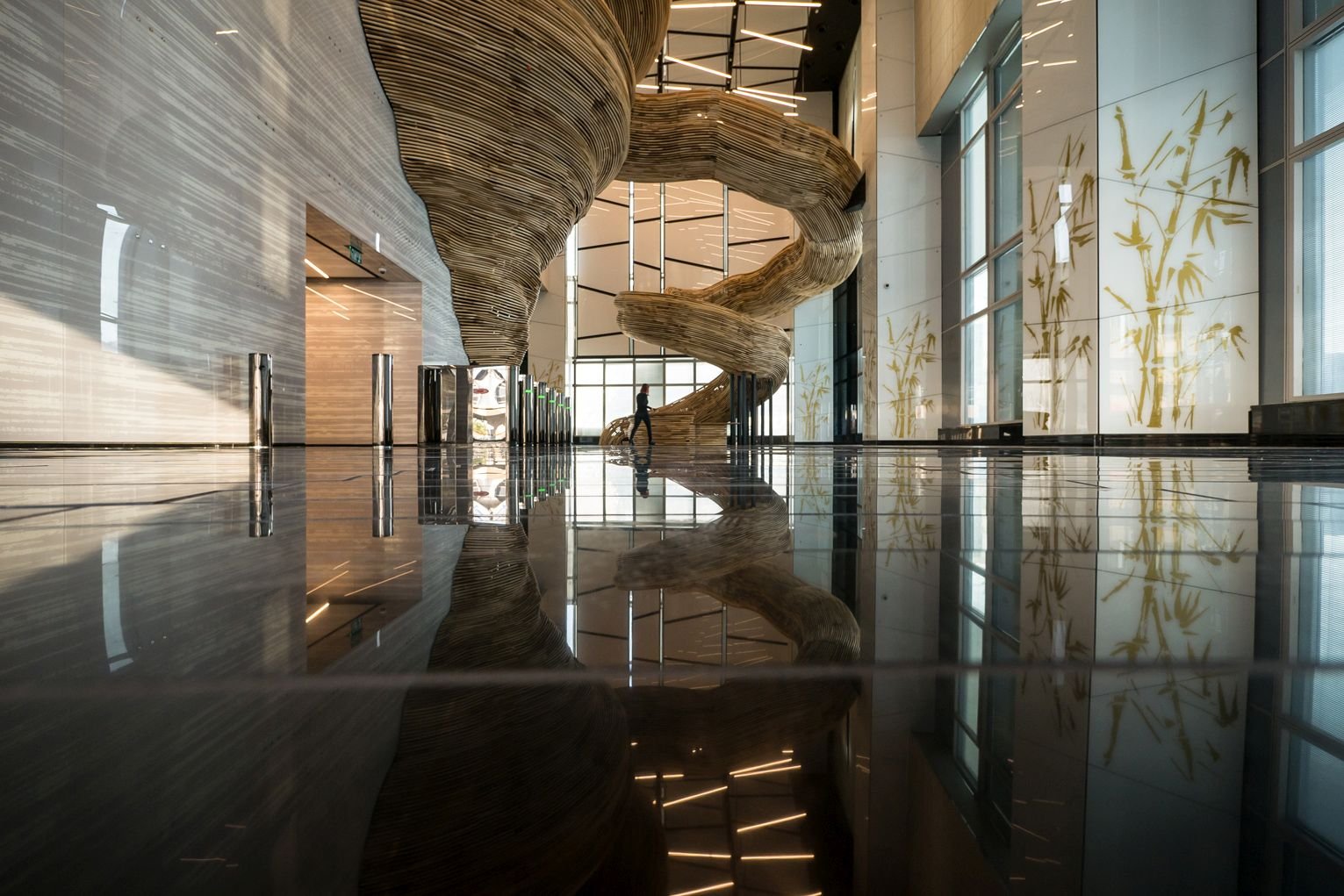In an aside from our usual features on projects today we take a break from the routine to showcase an amazing staircase installation supported by the American Hardwood Export council. When we saw this work of art we knew that it had to be shared with you. We hope you enjoy this as much as we did and if you would like to see more articles like this one please let us know!
Organic Staircase
“Navigating it isn’t meant to be as simple as taking a functional set of stairs to get from one level of a building to the next; it’s an experience in itself, taking in the whole structure from a new angle with every step.”

We are featuring an amazing tornado shaped, seemingly supportless staircase installed in a prominent business district tower and designed by architect Oded Halaf. This staircase took our breath away with the fantastic detail and high level of craftsmanship.
Built of American Tulipwood, Halaf wanted the staircase to be free of all visible support – a complex and seemingly impossible assignment, which had to be contracted out to an expert – Tomer Gelfand, who held the right mix of knowledge, experience, and immense creativity.
Building a tornado
The stair structure is composed of two interlocking parts: a skeletal metal staircase and a sculptural wooden envelope. Together, they rise as an expressive tornado from the reception desk – conceived at the ground and rising up to the first-floor mezzanine, fourteen meters above. The reception desk was envisioned as the starting point for the spiralling wooden sculpture and is made from the same tulipwood as the stair railings. To make this happen, Gelfand devised a system of continuous wooden profiles, which look fluid and flexible, but which are extremely stiff and stable.
Gelfand began by implementing an MRI-type scan to the skeleton, cutting vertically through the structure and generating sections in the width of the given wooden profile. The resulting number of cross-sections, each exported with a different radius requirement, produced a seemingly-endless amount of arches. In order to deal with this, Gelfand narrowed it down to ‘master-arches’ – devised by calculating the wooden profile’s average bending tolerance, which dictated the radius and angle of the ‘master-arches’.







